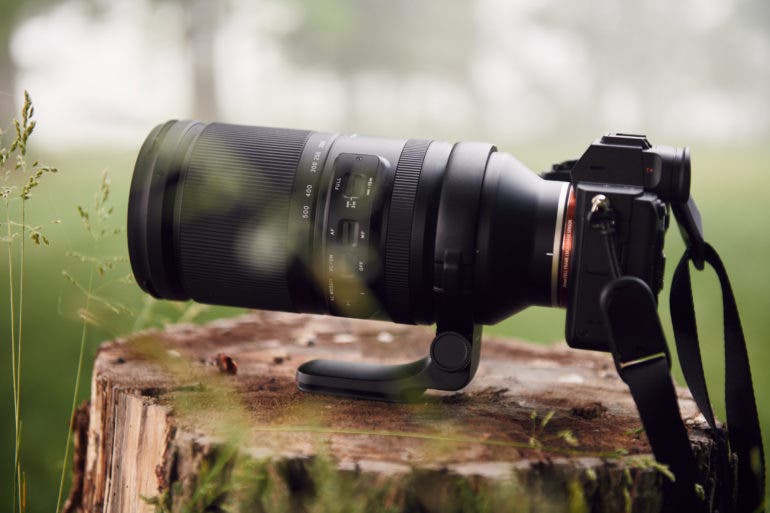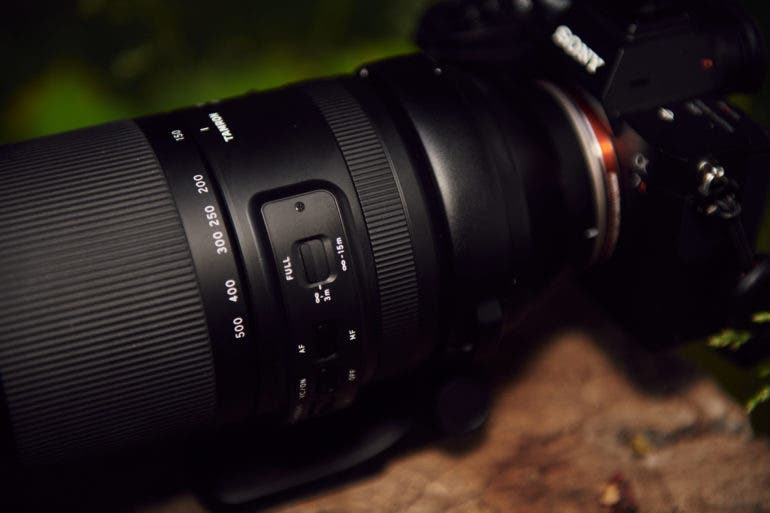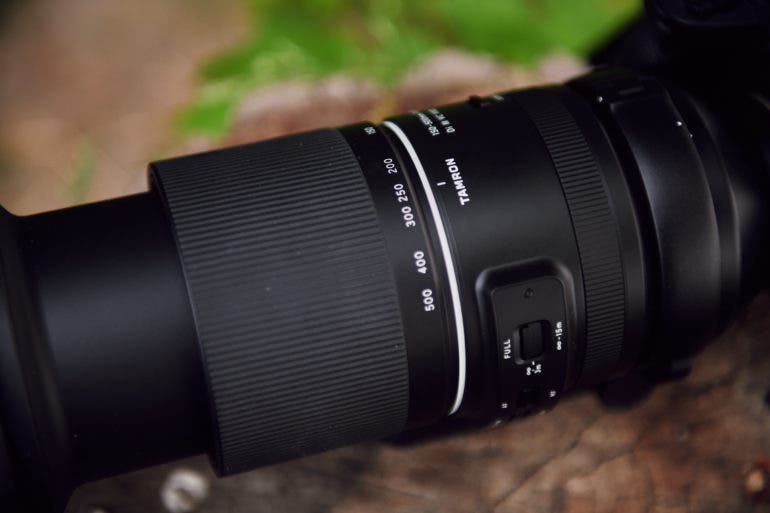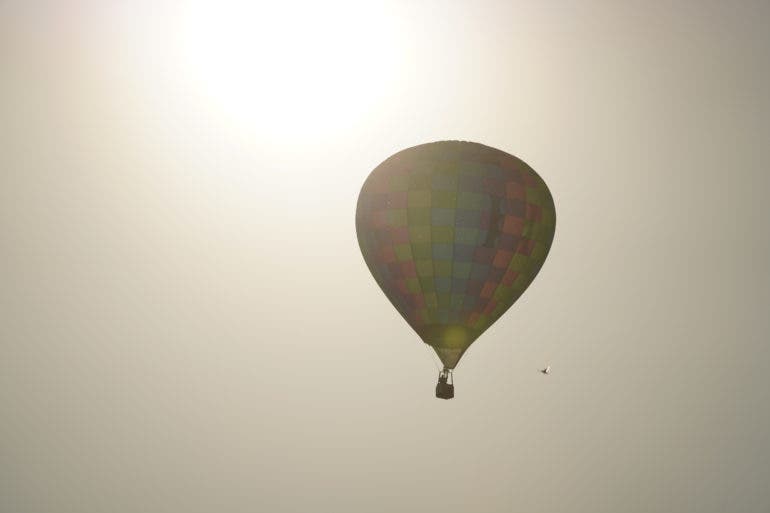Remarkable Zoom, Handheld: Tamron 150-500mm F5-6.7 Di III Review
With stabilization, a more compact design, and a reasonable price, the Tamron 150-500mm makes super telephoto more accessible.
The super-telephoto is one of the most difficult lenses to master both for the lens builder and the photographer attempting to wield such large glass. While no 500mm will be described as tiny, Tamron managed to shed some weight and length while still packing in a lot of zoom. The Tamron 150-500mm f5-6.7 Di III VC VXD weighs 3.8 pounds and is roughly eight inches long. With image stabilization built in, the new telephoto is manageable enough to shoot handheld.
I took the 150-500mm lens on a hike, photographed two soccer games, and chased hot air balloons — all without a tripod. I instantly fell in love with the 500mm reach that’s not attached to a stick. I was eager to open up the extreme zoom images. So how do the photographs from a handheld 500mm that’s priced lower than many competitors hold up?

Too Long, Didn’t Read
The Tamron 150-500mm f5-6.7 Di III VC VXD does an impressive job putting a 500mm zoom into a reasonably-sized lens. And the lens also manages to control aberration and distortion well. The biggest downside? The narrower aperture and long zoom length mean higher ISOs, along with some corner softness.
Pros and Cons
Pros
- Smaller than competing lenses
- Handheld telephoto shooting
- Versatile zoom range, with close-up ability
- Great color and background separation
- Reasonable price
- Weather-sealing
Cons
- Autofocus has occasional misses with fast action
- Soft corners
Gear Used

I used the Tamron 150-500mm f5-6.7 Di III VC VXD with the Sony A7R IV. I stashed my gear in the updated Wandrd PRVKE II backpack.
Innovations
500mm is a lot of reach. But, the Tamron 150-500mm f5-6.7 Di III VC VXD is smaller and lighter than several similar lenses, including the Sony FE 200-600mm f5.6-6.3 G OSS, the Nikon AF-S 200-500mm f5.6E ED VR, and the Sigma 150-600mm f5-6.3 DG OS HSM Contemporary. The Canon RF 100-500mm f4.5-7.1 IS USM is slightly smaller. The Tamron also packs in some optical design and coating meant to preserve image quality. But, the biggest innovation about this lens is, well, that’s it’s not quite as big.
Tech Specs
Tamron lists these tech specs for the 150-500mm lens:
- Focal Length: 150-500mm
- Maximum Aperture: F5-6.7
- Angle of View: (diagonal) 16°25’-4°57′ (for full-frame mirrorless format)
- Optical Construction: 25 elements in 16 groups
- Minimum Object Distance: 0.6m (23.6 in) (WIDE) / 1.8m (70.9 in) (TELE)
- Maximum Magnification Ratio: 1:3.1 (WIDE) / 1:3.7 (TELE)
- Filter Size: φ82mm
- Maximum Diameter: φ93mm
- Length: 209.6mm / 8.3 in (front tip of the lens to the lens mount face)
- Weight: 1,725g (60.8 oz) (without tripod mount included) / tripod mount 155g (5.5 oz)
- Aperture Blades: 7 (circular diaphragm, the circular diaphragm stays almost perfectly circular up to two stops down from maximum aperture)
- Minimum Aperture: F22-32
- Standard Accessory: Round-shaped hood, Lens caps, Tripod mount
- Compatible Mounts: Sony E-mount
Ergonomics
Monstrous is typically the best word to describe telephoto lenses that reach 500mm. But, while the Tamron 150-500mm f5-6.7 Di III VC VXD isn’t small, it’s smaller than competing lenses. The Tamron is roughly four inches shorter and almost a pound lighter than the Sony FE 200-600mm f5.6-6.3 G OSS, and the maximum aperture at the wide-angle is brighter on the Tamron. The 150-500mm lens weighs 60.8 ounces, or about 3.8 pounds, adding a few ounces for the tripod collar. It will take up a little more than an eight-inch slot in the camera bag.

While lighter than the closest competing lens, the 150-500mm is still hefty glass. It makes the Sony a7R IV front-heavy. After a few hours of use, the grip on the Sony body left a mark on my finger, keeping such a large lens upright.
The 150-500mm widens quickly from the lens mount out to a lens that accepts 82mm filters at the front. A tripod collar is included but can be unscrewed and removed from the lens for more compact handheld shooting. The first control from that mount is a narrow focus ring. It’s small, but it turns easy.

North of the focus ring, a set of controls sit on a small bump that separates the controls from the rest of the lens barrel. The first of the four switches is the focus limiter, which includes a full range, a three meter to infinity range, and a 15m to infinity range. That switch is followed by a manual focus switch and an on/off for the vibration compensation (Tamron’s term for image stabilization). And the final switch is to adjust the stabilization mode. As Tamron explains, slot one is a standard mode, two is for panning, and three leaves stabilization on constantly to help aid the view through the viewfinder.

The final control is a large zoom ring, which was easy to grab and turn without taking my eye from the viewfinder. This ring also pulls out, which locks the lens into place. Unlike most lenses with a lock, this lock works at different focal lengths, not just the smallest length. A white band allows you to see if the lens is locked with a quick glance. The lens ships with a basic but sturdy hood.

Build Quality

The Tamron 150-500mm f5-6.7 Di III VC VXD is said to be moisture resistant. In most of our tests, Tamron’s lenses can really take a beating from the elements. They’re a great combination of build quality, lightness, and performance. With that said, the 150-500mm doesn’t feel quite as nice as some weather-sealed lenses. But the difference is minimal: the lens doesn’t feel cheap. The switches all click nicely, and the control rings turn smoothly.
Autofocus

500mm is a lot of lens and a lot of pieces for the autofocus motors to move. I shot a soccer game with this lens using the Sony a7r IV, and I would get groups in perfect focus and groups where nothing was sharp. The lens had the most difficulty with subjects heading towards the camera. Around fifteen percent of the shots from one soccer game were soft.
That isn’t a great hit rate, but it’s not bad. The A7R IV, because of its high megapixel count, doesn’t focus as fast as the A7 III. Combined with challenging an autofocus motor to move so many pieces along a large lens, and that autofocus miss rate actually starts to look good. Sony owns a large share in Tamron, so the two companies tend to share autofocus algorithms. As a result, Tamron tends to have better autofocus performance than other third-party lenses.
With all this said, the combo we used is better for wildlife. Wildlife doesn’t tend to move as fast or as erratically as athletes. Want a nice photo of a butterfly? This is the combo you’ll want.
The Tamron 150-500mm f5-6.7 Di III VC VXD can focus between 23.6 and 70.9 inches away from the front of the lens, depending on the zoom position. That’s fairly good for such a long lens, and it allows you to get close-ups just above a 1:3 ratio.
Ease of Use

Giant telephoto lenses are hard to hold. But, the Tamron 150-500mm f5-6.7 Di III VC VXD is equipped with stabilization. Tamron doesn’t list how much in the tech specs, but the company says it’s enough to use the lens handheld. Combine this with the image stabilization in Sony’s cameras, and you’ve got a winning combo. For the record, The Phoblographer’s editors are carefully selected to be able to handhold a camera to slow shutter speeds.
And, true to that statement, the lens barely ever touched a tripod during my review. With careful breathing and bracing my elbows, I could shoot at 1/125 at 500mm. But, more realistically speaking, I had a better hit rate at 1/800 when shooting soccer. That’s both from the motion of the athletes and my own motion holding such a large lens for an extended period. It may be lighter and smaller than some competing lenses, but it’s still a 500mm zoom.
While the lens will take some patience (and higher ISOs), I wouldn’t rule it out for a newer photographer. Photographers will need to learn the function of those switches, the most complex being which VC mode to use. And, most importantly, they need to practice a careful, steady grip.
Image Quality

The wow factor from the Tamron 150-500mm f5-6.7 Di III VC VXD comes from the ability to get in super close. The sharpness and bokeh aren’t as impressive as a brighter prime lens. But, distortion is managed well, color is great, and 500mm will still create blur.
Bokeh

An f5-6.7 isn’t ideal for bokeh. But, the 500mm focal length draws that background closer, exaggerating blur and making any bokeh balls look a little larger. So, while the bokeh won’t compare to a prime, there’s still a good amount of background separation. And, when I did manage to get some bokeh balls, I didn’t spot onion-ringing.
Sharpness

The 150-500mm performed similarly at both the widest and longest focal lengths. The center is nice and sharp, but the corners and edges have obvious softness. The corner softness improves slightly as the aperture narrows but was still apparent even at f9. Again, it’s not a lens where you can place the subject on the very edge.
While the sharpness is good at the center, keep in mind that this lens will require higher ISOs. That can lead to real-world shots that feel a bit less sharp than a shorter focal length that can get away with lower ISOs.
Lens Character

The 150-500mm focal length adds character simply with some extreme distance distortion, drawing that background closer. Shooting into the sun, the lens had a bit of ghosting and some soft flare that reduces the overall contrast of the image. However, I didn’t spot any obvious chromatic aberration over the course of my tests.
For such an extreme focal length, this Tamron manages line distortion well. I could spot just a bit of pincushion distortion when shooting a test chart, but it’s slight enough that it never caught my attention in real-world shots.
Color Rendering

The Tamron 150-500mm f5-6.7 Di III VC VXD captured a wide range of tones, with colors that felt accurate. Flare and haze, of course, can dampen the color and create a bit of a moody effect.
Extra Image Samples
From day one, The Phoblographer has been huge on transparency. Nothing from this review is sponsored. Further, lots of folks will post reviews and show lots of editing in the photos. The problem then becomes that anyone and everyone can do the same thing. It’s not showing what the lens can do. So our Extra Image Samples section shows edited and unedited photos. From this, you can make a decision for yourself.
Edited

















Unedited









Conclusions
Likes
- While large, the size is manageable enough for hikes.
- Stabilization means you can easily use this lens without a tripod.
- The zoom is great, and it gets in pretty close too.
- Color is solid, and the long focal length creates some good background separation.
- The price (and size) is better than Sony’s 200-600mm E mount lens.
- There’s some weather resistance.
Dislikes
- The autofocus is good but not great with the Sony a7r IV.
- The corners are soft, even at apertures like f9.
A 500mm lens captures photos that smaller lenses simply don’t. The Tamron 150-500mm f5-6.7 Di III VC VXD has great reach. And while heavy, it’s not too heavy to wield without a tripod, thanks to stabilization. Despite making a big zoom compact, the lens does a good job of managing distortion and aberration. The center is sharp, and the colors are great. The long focal length and close focusing capabilities can still produce some good background separation.
But, the corners are soft and, while the center is sharp, at 500mm, you’ll be using higher ISOs. The lens also lacks weather-sealing. And I found the autofocus to be good but not great. (But again, this was partially from the camera body, not the lens itself.)

For about $1,400, the Tamron 150-500mm f5-6.7 Di III VC VXD does an impressive job of bringing distant subjects in close. While not perfect, I think wildlife photographers and hobbyist sports photographers will really love this lens — I know I did. I’m giving the lens four out of five stars.

